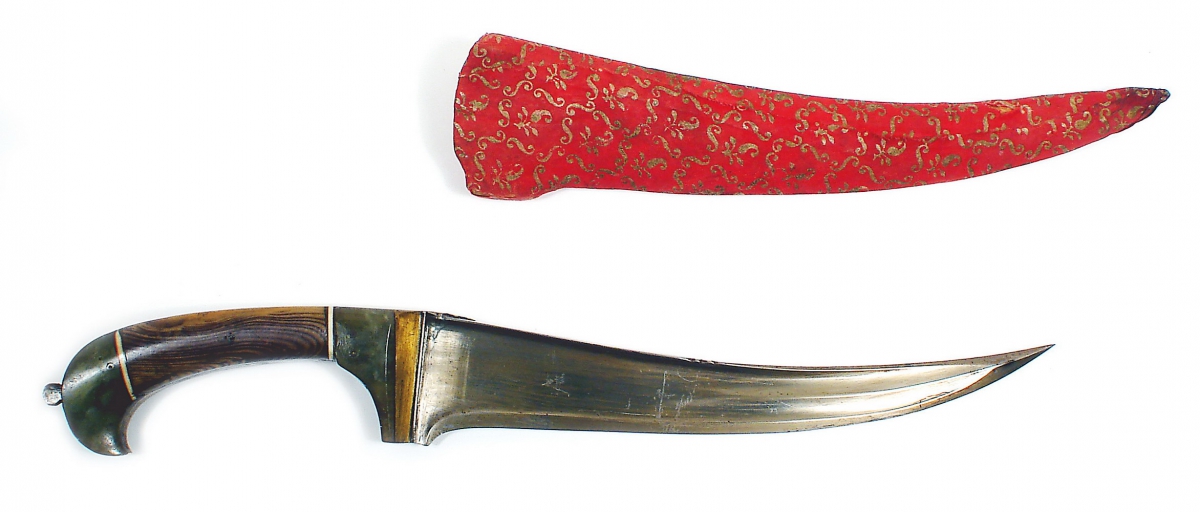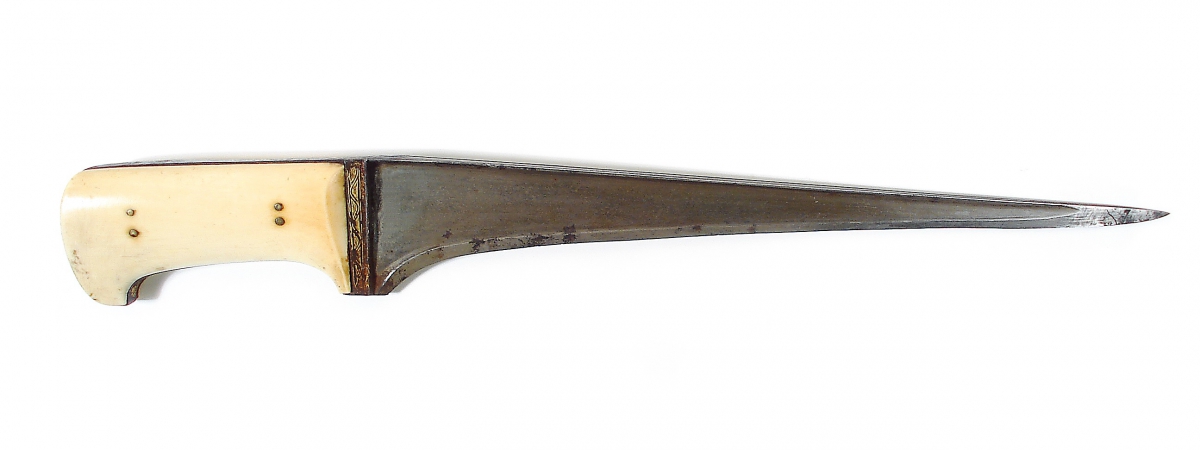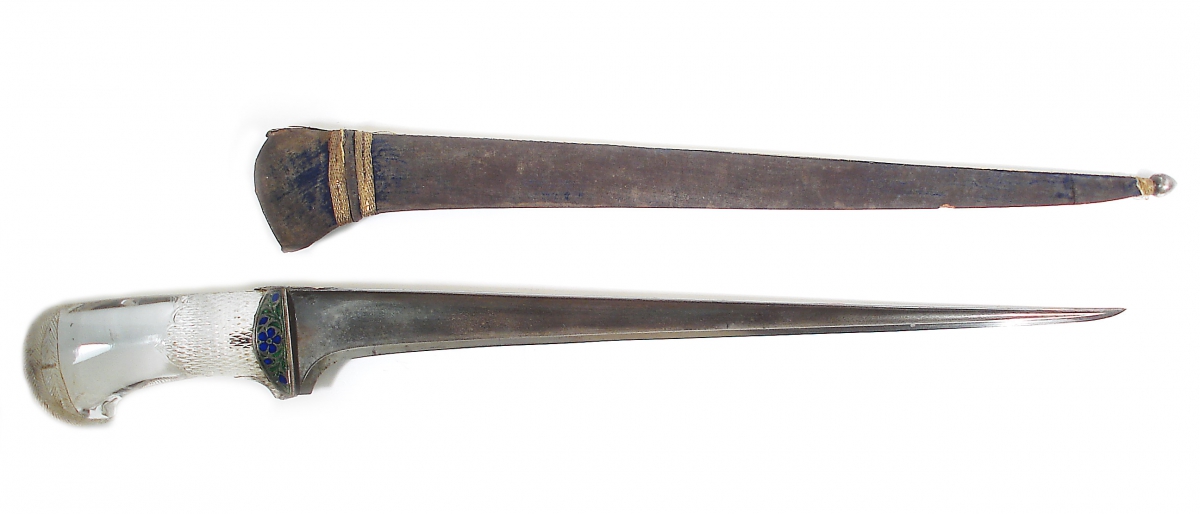Weapon Wednesday: Pesh Kabz
Published
Categories
Blog Post

Pesh Kabz daggar with sheath. Steel, jade, stone, water buffalo horn, fabric. 19th century, India. ROM 948.1.256a-b The Collection of the First Lord Kitchener. Currently part of the South Asian Study Collection in the ROM’s Education Department.
Written by Aruna Panday, Ph.D Candidate York University, Co-Chair Friends of South Asia, Department of World Cultures Intern.
Pesh Kabz, means ‘fore grip’ in Persian, a language from Iran where this style of dagger finds its origins. It soon became used in Afghanistan, and then India after being introduced there by the Mughals. The weapon is generally fairly short, about the length of one’s fore arm, with a smooth gentle curve to the blade that is not gentle at all! Pesh kabz became popular in the 17th century when the pointed tip was designed to penetrate chain mail and other sorts of protective armour. When the British in India during the Colonial period referred to the ‘Afghan’ or ‘Khyber’ knife, this is the blade they spoke of, naming it thusly since Afghan troops during the first and second Anglo-Afghan wars (1839-1842, 1878-1880) were known to use it to execute prisoners. Today it continues to be used ceremonially in Afghanistan.
Cultural anthropologist Igor Kopytoff advocates a ‘biography of things.’ What he means, is that within material items (all of which he considers to be commodities, but let us ignore that point) are stories to be told and histories to be learnt. The stories of these objects do not end once they are made; their making is just the beginning. In this pesh kabz example, stone and metal were sourced and transformed through mining, apprenticeship, craftsmanship, ingenuity, and necessity. Its makers exhibited particular skills and earned a livelihood. The dagger lived, perhaps as a thing of ceremony, perhaps as an instigator of discipline, likely as a harbinger of death. Its owner had some wealth and power, we know this for the handle is made of precious materials. Cleansed of the blood it once shed, it became a trophy, a memento, a relic, a reminder. Eventually, it may have been plundered or sold. It was purchased by, gifted to or won by the First Lord Kitchener, a colonial administrator who won fame for his imperial campaigns and served as the Commander in Chief of the Indian Army from 1902 to 1909. His collection of arms and armour was bequested to the Royal Ontario Museum by a descendant who had inherited it and latter settled in Canada. The current chapter of this pesh kabz dagger's life is in the South Asian Study Collection, available to students and visitors alike to learn more about the wonders of technical craftsmanship and the horrors of war. Some will be delighted by its curves, its gleam, its technological innovation, and its weight in their hands. Others, like me, will cringe at the implication of how it may have once been used. This isn't a new object nor a reproduction; it is an object with a biography.
OTHER EXAMPLES OF PESH KABZ IN ROM's COLLECTIONS

Pesh Kabz knife, Steel with ivory grip and gilding, Pakistan, 19th century, 42.3 x 6 x 2.9 cm. ROM 948.1.86 The Collection of the First Lord Kitchener.

Pesh kabz knife with sheath, Steel blade with rock crystal grip inlaid with silver, enamel, India, 18th century, 52.5 x 4.9 x 3 cm. ROM 948.1.407.A-B The Collection of the First Lord Kitchener.



